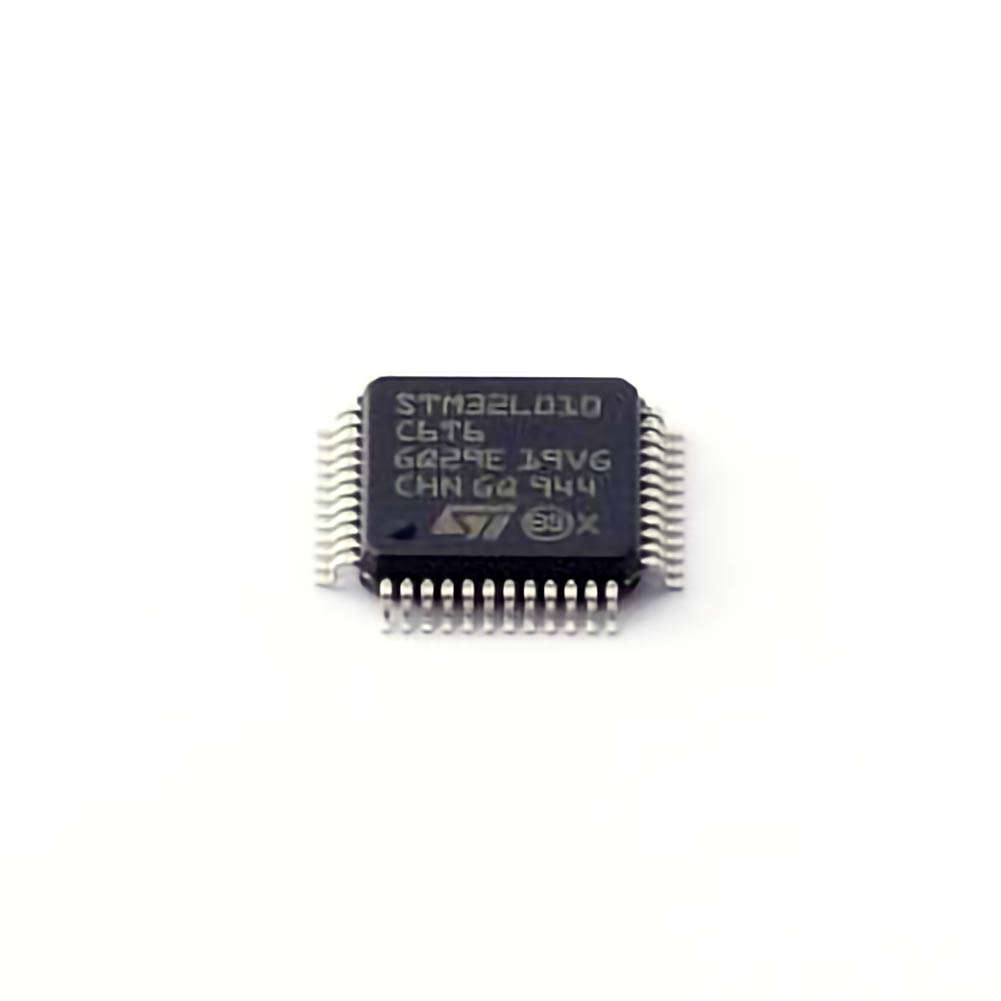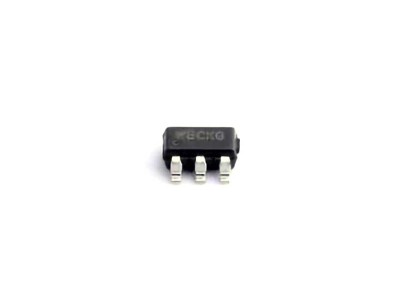
Understanding the Common Troubleshooting Issues with STM32L010C6T6
The STM32L010C6T6 is widely celebrated for its low Power consumption, high performance, and rich feature set, making it an excellent choice for applications requiring long battery life, such as IoT devices and wearable electronics. However, as with any development process, users may run into challenges during the design, coding, or hardware interfacing stages. This article addresses the most common issues developers face with the STM32L010C6T6 and offers practical troubleshooting steps.
1. Power Consumption Issues
One of the most appealing features of the STM32L010C6T6 is its ultra-low power consumption, but achieving optimal power efficiency can be tricky if not handled correctly.
Problem: The microcontroller may not enter its low-power modes effectively, resulting in higher-than-expected current draw.
Solution: Ensure that the microcontroller is properly configured to use its various low-power modes. The STM32L010C6T6 supports several low-power modes, such as Sleep, Stop, and Standby modes. These modes should be properly managed in the firmware.
Sleep Mode: In this mode, the CPU is stopped, but the system Clock continues to run. It's important to make sure that unused peripherals are powered down to reduce power consumption further.
Stop Mode: This mode further reduces power by halting the system clock and peripheral clocks. However, the low-power voltage regulator should be activated to maintain minimal power draw.
Standby Mode: This is the lowest power consumption mode, in which the voltage regulator is turned off. Developers need to configure external interrupts properly to wake up the microcontroller.
Check the STM32CubeMX settings for low-power configuration and ensure that the clock and peripheral configurations are optimized for power savings. Also, be mindful of any peripherals that might remain active unintentionally.
2. Reset and Boot Problems
A reset issue is another common problem that may arise during STM32L010C6T6 development. This could manifest as failure to start up after a reset or incorrect booting behavior.
Problem: The microcontroller fails to start after a reset or behaves erratically during initialization.
Solution:
Check the external reset circuitry: STM32L010C6T6 requires a proper external reset signal to initialize correctly. Ensure the Reset Pin (NRST) is connected to an active-low reset circuit. A weak or floating reset signal can lead to the microcontroller not resetting as expected.
Boot Configuration: The microcontroller can boot from different sources such as Flash Memory , System Memory, or SRAM. This is controlled by the boot pins (BOOT0 and BOOT1). If these pins are incorrectly configured, the microcontroller may attempt to boot from an invalid location, causing it to hang or reset continuously. Check the boot configuration in STM32CubeMX and ensure the BOOT0 pin is set correctly.
Watchdog Timer: The Independent Watchdog Timer (IWDG) or the Window Watchdog (WWDG) may cause unwanted resets if they are not properly handled. Verify that the watchdog timers are being cleared in your application code as required.
3. Communication Failures (UART, SPI, I2C)
Many developers use STM32L010C6T6 for communication with peripherals via common protocols like UART, SPI, or I2C. However, misconfigurations or incorrect handling of communication protocols often lead to malfunctioning systems.
Problem: Communication over UART, SPI, or I2C fails intermittently or does not work at all.
Solution:
Check Clock Configurations: Communication peripherals rely on the correct clock settings. Ensure that the peripheral clocks are correctly configured using STM32CubeMX. For example, the baud rate for UART communication or clock speed for SPI should be set according to the specifications of the connected device.
Pin Configurations: Incorrect pin configurations can cause communication failures. Verify that the correct pins are configured for each peripheral (e.g., TX/RX for UART, SCK/MISO/MOSI for SPI, SDA/SCL for I2C). STM32CubeMX can be helpful in ensuring the correct assignment of pins.
I2C Pull-up Resistors : The I2C protocol requires pull-up resistors on both the SDA and SCL lines. If these resistors are not present or incorrectly sized, the communication may fail. Ensure that the correct values are used for these resistors (typically 4.7kΩ).
Peripheral Initialization: Make sure the communication peripherals are properly initialized in the firmware. If using UART, ensure both the transmitter and receiver are configured and enabled. For SPI and I2C, confirm that the slave devices are ready to communicate.
4. Flash Memory Corruption or Boot Failure
Flash memory is a critical component for storing firmware on the STM32L010C6T6. However, improper programming or power issues can lead to flash corruption.
Problem: Flash memory corruption can cause the microcontroller to fail to load the firmware or behave unpredictably.
Solution:
Proper Programming Procedure: Ensure that the firmware is correctly written to the flash memory. Use STM32CubeProgrammer or other compatible tools to safely program the flash memory. Pay attention to the voltage and timing during programming to avoid partial writes.
Power Supply Stability: Unstable power supply during firmware programming or reset events can lead to corruption. Make sure your power supply is stable and properly filtered to avoid glitches during critical operations like flashing.
Flash Erase Before Programming: Before writing new data to flash, perform an erase operation to ensure that there is no leftover data that could cause errors.
More Solutions and Advanced Troubleshooting for STM32L010C6T6
After covering some of the common issues with the STM32L010C6T6, let's explore additional troubleshooting methods and advanced solutions to ensure smooth development and deployment of your project.
5. Peripheral Configuration and Initialization Errors
STM32L010C6T6 comes with a rich set of peripherals, including GPIOs, timers, ADCs, DACs, and more. Configuring these peripherals correctly can be a challenge, especially when dealing with the complex interactions between the MCU's internal components.
Problem: A peripheral such as a timer, ADC, or GPIO may not work as expected, or it may cause erratic behavior in the system.
Solution:
Check Peripheral Clocks: For peripherals like timers, ADCs, and communication interface s, verify that their respective clocks are enabled and correctly configured. For example, enabling the ADC requires configuring the clock for the ADC peripheral through the RCC (Reset and Clock Control) registers.
GPIO Mode Configurations: For GPIOs, ensure that the pins are configured with the correct mode (input, output, alternate function, analog) and that the appropriate pull-up or pull-down resistors are enabled.
Interrupt Configurations: Many peripherals rely on interrupts to trigger actions (e.g., timers, ADCs). Ensure that interrupt handling is set up correctly and that the interrupt vectors are configured properly in the NVIC (Nested Vectored Interrupt Controller).
6. Debugging Tips
Debugging embedded systems can sometimes be a challenge due to the lack of visibility into the running code. Fortunately, STM32L010C6T6 has several debugging features that can help troubleshoot your design.
Problem: Code may not execute as expected, or the system may freeze during execution.
Solution:
Use STM32CubeIDE or Keil: These development environments offer powerful debugging tools, including breakpoints, watch variables, and step-by-step execution. Leverage these features to track down issues in the code.
Serial Output Debugging: In cases where debugging through the IDE is not possible, using a serial output (via UART) can help. Send debug messages over UART to gain insight into the system’s behavior during runtime.
Use JTAG/SWD Debugging: The STM32L010C6T6 supports JTAG and Serial Wire Debug (SWD) for advanced debugging. These interfaces allow for deeper inspection of the microcontroller’s state and can provide more visibility into the running application.
7. Software Updates and Firmware Compatibility
Keeping your software and firmware up to date is vital to ensure compatibility and take advantage of new features and bug fixes.
Problem: The software or firmware becomes outdated, causing compatibility issues with newer hardware or peripherals.
Solution:
STM32CubeMX: Regularly check for updates in STM32CubeMX to make sure your configuration is compatible with the latest hardware and software libraries.
Firmware Updates: Always ensure your firmware is updated with the latest bug fixes and features from STMicroelectronics.
Conclusion
The STM32L010C6T6 is a powerful and versatile microcontroller ideal for low-power applications. However, like any embedded system, it can pose some challenges during development. By understanding common issues and employing effective troubleshooting techniques, developers can avoid pitfalls and build reliable, efficient systems. By following the solutions outlined in this article, you'll be well-equipped to overcome the most frequent problems faced during STM32L010C6T6 development, ensuring your project runs smoothly from start to finish.
If you are looking for more information on commonly used Electronic Components Models or about Electronic Components Product Catalog datasheets, compile all purchasing and CAD information into one place.

